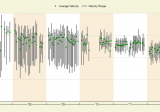Dodgers Absorb the Red Sox
.
In a recent "Dynasties" article at BJOL, James points out that the 1900-1912 Pirates became a dynasty by absorbing a second team:
7. The Pittsburgh Pirates, 1900-1912
19 Points, Tied on our List as the 14th-15th greatest team of all time
Key Figures: Honus Wagner, Fred Clarke, Deacon Phillippe and Sam Leever.
The "Pirates", as I suspect most of you know, became the Pirates by stealing the best players from the Louisville team. In 1898 Pittsburgh went 72-76, Louisville 70-81; in 1899 Pittsburgh went 76-73; Louisville 75-77. Neither team was great, but they had about a half a team each. Pittsburgh had Ginger Beaumont, Jimmy Williams, Jesse Tannehill, Sam Leever and Jack Chesbro; Louisville had Honus Wagner, Fred Clarke, Chief Zimmer, Deacon Phillippe and Rube Waddell. The two teams had several investors in common, people who owned parts of both teams. After the 1899 season the Louisville team was folded, and the two teams merged into one. Pittsburgh "pirated" the Louisville roster, taking three Hall of Famers.
The combined team went 79-60 in 1900, second place, but earned a dynasty point because the National League was still using a post-season series to decide its championship, and the Pirates were one of the two teams. The Pittsburgh/Louisville combo team won the National League in 1901 (90-49), 1902 (103-36) and 1903 (91-49), and continued to play brilliant baseball for nine years after that, winning the World Championship in 1909.
As saberdweebs, we focus on the idea that Beckett, Crawford and AGone are collectively being paid too much. We haven't focused on the possibility that maybe these AL celebrities will step down to a AAA league ;- ) and demolish it. ... we're tongue in cheek about the Dodger dynasty, LrKrBoi29, but this on-loading of three stars at once is a subtext to be aware of.
MLB Trade Rumors has a bullet list of talking points that is high-quality even by their standards. SSI's crunch of these talking points:
.
=== Don't Leave Anything On the Field (in Boston) ... or On the Conference Table, Dept. ===
This morning, the Red Sox and Dodgers completed a nine-player blockbuster sending Josh Beckett, Adrian Gonzalez, Carl Crawford, and Nick Punto to Los Angeles for James Loney, Allen Webster, Ivan De Jesus, Jerry Sands, and Rubby De La Rosa. For more on the quartet of prospects the Red Sox received, check out Mike Axisa's rundown from earlier today. Here's a look at some of the reaction to today's mega-deal..
- Buster Olney of ESPN.com (Insider sub. req'd) looks at the winners and losers of the deal. The Dodgers of 2012 are unsurprisingly among the winners while the Dodgers of 2017, Olney writes, appear to be losers in the trade. Olney also notes that this is the first time in MLB history in which two players with $100MM remaining on their contracts were involved in a trade.
First time in which two players with $100M remaining were both in a deal ... and both going one way! With another pricey player. Wow. No precedents on this one.
The takeaway for M's fans: the value of a playoff run, and the value of a TV deal, can dwarf $/WAR considerations. The M's are coming up on their own TV deal. Let's hope that the conservative M's ownership committee can find the guts that everybody else does, to push into the pot in order to reap the investment benefits.
.
